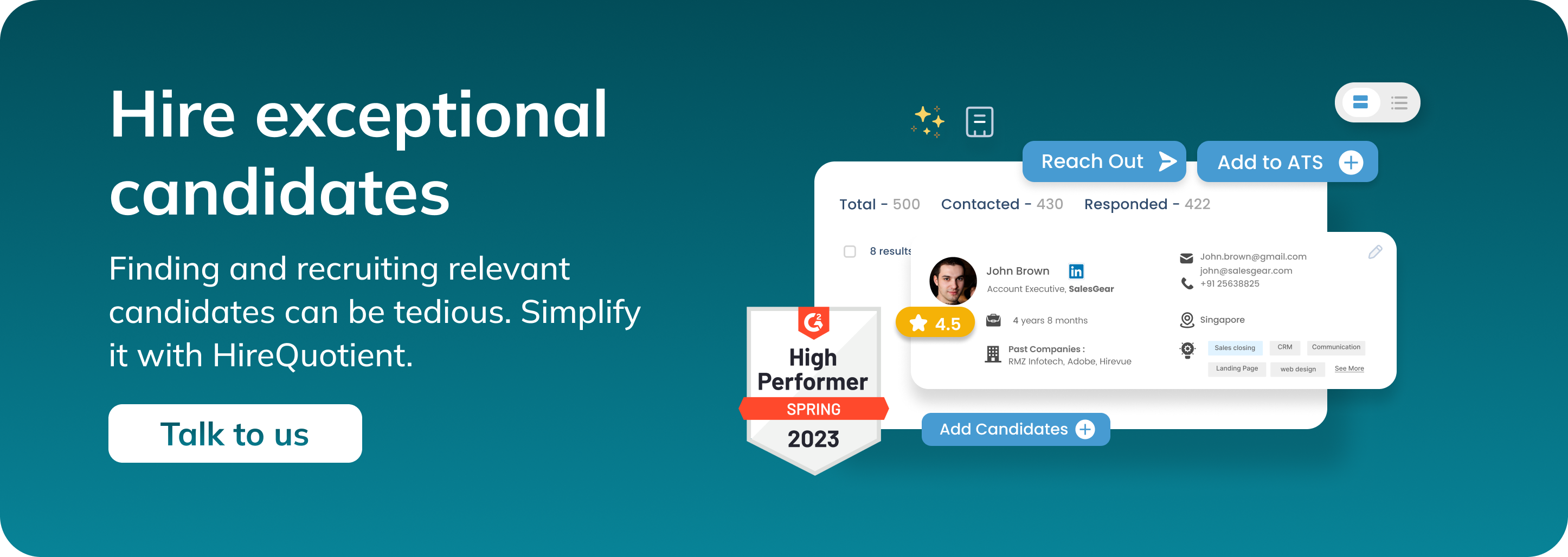Sabbatical Leave
Sabbatical leave from work refers to a deliberate, planned break granted by an employer to an employee, usually after a specific period of continuous employment. This leave is distinct from regular vacation time as it is typically longer and is intended for more substantial pursuits, such as academic research, creative projects, volunteer work, travel, or further education.
What is a Sabbatical?
A sabbatical is an extended period of leave from work, traditionally taken to achieve a significant personal or professional goal. The term originates from the biblical concept of the Sabbath, where one takes a break from routine work to rest and rejuvenate. While sabbaticals were initially an academic tradition, they have become increasingly popular in various industries, providing employees with a unique opportunity to recharge, pursue personal interests, or engage in professional development activities.
What is Sabbatical Leave from Work? A Definition
Sabbatical leave from work refers to a deliberate, planned break granted by an employer to an employee, usually after a specific period of continuous employment. This leave is distinct from regular vacation time as it is typically longer and is intended for more substantial pursuits, such as academic research, creative projects, volunteer work, travel, or further education. Sabbatical leave is often seen as an investment in the employee's long-term well-being and professional growth, benefiting both the individual and the organization.
Why is a Sabbatical Important? 7 Benefits of a Sabbatical Leave
1. Mental Health and Well-being: Sabbatical leaves provide a crucial break from the daily grind, helping employees alleviate stress, prevent burnout, and improve their overall mental health. This extended time off can lead to better emotional and psychological well-being.
2. Professional Growth: Employees can use sabbatical leave to gain new skills, knowledge, or certifications that can enhance their careers. This period can be used for attending workshops, and seminars, or pursuing higher education, which can lead to career advancement.
3. Personal Development: A sabbatical leave allows individuals to explore personal interests and passions that they may not have time for during regular work schedules. This can lead to a more fulfilled and well-rounded life.
4. Increased Productivity: Employees often return from sabbatical leave with renewed energy, focus, and creativity. This boost in productivity can lead to innovative ideas and improved work performance.
5. Retention: Offering sabbatical leave can serve as a powerful retention tool. It demonstrates an organization's commitment to employee well-being and long-term career development, encouraging employees to stay with the company longer.
6. Work-Life Balance: Sabbaticals promote a healthier work-life balance by providing employees with the time to focus on personal goals and family commitments, which can lead to greater job satisfaction and loyalty.
7. Cultural Enrichment: Exposure to different cultures and experiences during a sabbatical can lead to greater cultural awareness and sensitivity. This can enrich the workplace environment and contribute to a more inclusive and innovative organizational culture.

Sabbatical Leave Rules
The specific rules governing sabbatical leave can vary widely between organizations. However, common elements include:
- Eligibility Criteria: Typically, employees become eligible for sabbatical leave after a certain period of continuous service, often ranging from five to ten years.
- Length of Leave: Sabbaticals can vary in length, but they generally range from a few weeks to a year. The exact duration is often determined by company policy and the purpose of the sabbatical.
- Purpose of Leave: Many organizations require that the sabbatical be used for activities that contribute to personal or professional growth, such as further education, research, volunteering, or pursuing creative projects.
- Approval Process: The process for approving a sabbatical usually involves multiple levels of management and HR, ensuring that the leave aligns with both the employee's goals and the organization's needs.
- Pay and Benefits: Sabbaticals can be fully paid, partially paid, or unpaid, depending on the organization's policy. Additionally, handling benefits such as health insurance during the leave period should be clearly defined.
How Long is Sabbatical Leave?
The duration of sabbatical leave can vary significantly depending on the organization's policies and the individual's needs. Common lengths include:
- Short-term Sabbaticals: Typically ranging from one to three months, these are suitable for employees seeking to complete short-term projects or take a break for personal rejuvenation.
- Medium-term Sabbaticals: Lasting between three to six months, these provide a more substantial break, allowing for deeper personal or professional development.
- Long-term Sabbaticals: Spanning six months to a year, these are often used for significant undertakings such as completing a degree, conducting in-depth research, or engaging in extensive travel or volunteer work.
The ideal length of a sabbatical should balance the needs of the employee with the operational requirements of the organization.
What’s there in it for the Employer? Benefits of Sabbatical Leave for the Organization
1. Enhanced Employee Loyalty: Offering sabbaticals can increase employee loyalty by demonstrating the organization's commitment to their long-term well-being and professional development.
2. Skill Development: Employees may acquire new skills and knowledge during their sabbatical that can directly benefit the organization upon their return.
3. Improved Morale: Providing sabbatical leave can boost overall employee morale and job satisfaction, creating a more positive and productive workplace environment.
4. Innovation: Time away from routine tasks can lead to fresh perspectives and innovative ideas that employees can bring back to the organization.
5. Succession Planning: Temporary gaps created by sabbaticals can provide opportunities for other employees to take on new responsibilities and develop leadership skills, aiding in succession planning.
6. Employer Branding: Being known as a company that offers sabbaticals can enhance the organization's reputation and help attract top talent.
7. Workplace Flexibility: Promotes a culture of flexibility and trust, which can enhance overall organizational resilience and adaptability.

How Does A Sabbatical Leave Work?
Requesting a Sabbatical
- Initiation: The process begins with the employee expressing interest in taking a sabbatical. This is typically followed by an initial discussion with their direct manager to explore feasibility and initial thoughts on the timing and purpose of the leave.
- Proposal: The employee submits a formal proposal outlining the intended purpose, duration, and expected benefits of the sabbatical. This proposal should also include a plan for how their responsibilities will be managed during their absence.
Approval
- Evaluation: The proposal is reviewed by management and HR. This evaluation considers the alignment with company policy, the potential impact on the team and organization, and the overall feasibility of the sabbatical.
- Decision: The final decision on whether to approve the sabbatical is made, often requiring multiple levels of approval to ensure all considerations are addressed.
Planning
- Work Coverage: A comprehensive plan is developed to ensure the employee's duties and responsibilities are adequately covered during their absence. This may involve temporary hires, redistributing tasks among existing staff, or training colleagues to take over specific functions.
- Transition: Handover processes are established, including detailed documentation and training sessions to ensure a smooth transition.
Taking the Sabbatical
- Leave: The employee embarks on their sabbatical, adhering to the agreed-upon terms and goals outlined in their proposal. This period should be focused on the objectives set for the sabbatical, whether it’s rest, study, travel, or other activities.
- Updates: Periodic check-ins may be required, depending on the nature of the sabbatical and the organization’s policy. These updates can help ensure that the employee’s activities remain aligned with the sabbatical’s objectives.
Returning to Work
- Reintegration: Upon returning, the employee is reintegrated into their role. This may involve a debriefing session where they share their experiences and insights gained during the sabbatical.
- Support: Ongoing support is provided to help the employee transition back into their regular duties, which may include additional training or a phased return to work.
Developing A Sabbatical Leave Policy
Define the Purpose and Goals of the Sabbatical Leave Program
Clearly articulate the objectives of the sabbatical leave program. This could include goals such as improving employee well-being, encouraging professional growth, fostering innovation, or supporting work-life balance.
Determine Eligibility
Set clear criteria for who can apply for sabbatical leave. This often includes factors like tenure (e.g., a minimum of five years of service), job performance, and alignment with organizational goals.
Establish the Length of the Sabbatical
Define the minimum and maximum duration for sabbatical leave, ensuring flexibility to meet diverse needs while maintaining operational stability. Common durations range from one month to a year.
Determine the Pay and Benefits
Decide on the compensation structure during the sabbatical. Options include fully paid, partially paid, or unpaid leave. Additionally, outline how benefits such as health insurance and retirement contributions will be handled during the leave period.
Develop a Process for Requesting and Approving Sabbatical Leave
Create a clear, step-by-step process for employees to apply for sabbatical leave. This should include guidelines on how to prepare a proposal, submission deadlines, and the approval workflow involving management and HR.
Develop a Plan for Covering the Employee’s Work During the Sabbatical
Ensure that the employee’s responsibilities are adequately covered during their absence. This might involve hiring temporary staff, redistributing tasks among team members, or cross-training existing employees.
Develop a Plan for the Employee’s Return
Outline steps for reintegrating the employee into their role after the sabbatical. This should include a debriefing process, any necessary training updates, and support mechanisms for their return to ensure a smooth transition back to work.
Communicate the Policy
Clearly communicate the sabbatical leave policy to all employees. Ensure they understand the benefits, eligibility criteria, application process, and the overall purpose of the program.
Review and Update the Policy Regularly
Periodically review the sabbatical leave policy to ensure it remains relevant and effective. Make adjustments based on feedback from employees and any changes in organizational goals or industry standards.
How Long is an Ideal Sabbatical Leave?
The ideal length of a sabbatical leave varies depending on several factors, including the employee’s role, the purpose of the leave, and the organization’s needs. Typically, a duration of three to six months strikes a good balance, providing ample time for rest and personal development without excessively disrupting the workplace.
However, some sabbaticals may extend up to a year for more extensive projects or research. Ultimately, the ideal length should be tailored to achieve the desired outcomes for both the employee and the organization.
Frequently Asked Questions
Who Can Take a Sabbatical Leave?
A: The eligibility for sabbatical leave varies from company to company. Some companies offer it to all employees, others only to employees who have reached a certain number of years of service or have a specific job title.
Should You Offer Sabbatical Leave?
A: It depends on the company’s resources and goals. Offering a sabbatical leave can be a great way to retain and motivate employees, but it can also be costly and disruptive to the company’s operations. It’s essential to weigh the pros and cons before making a decision.
Is a sabbatical a good idea?
A: A sabbatical can be an excellent way for employees to recharge, gain new experiences, and return to work with renewed energy and new skills. It’s a good idea for both the employee and the company as long as it’s well-planned and executed.
What do you do on sabbatical leave?
A: The purpose of sabbatical leave varies from person to person. It can be used for personal development, travel, volunteer work, pursuing a passion project, or taking care of personal matters.

